Can the current trend keep up to end the 2018/19 marketing year?

USDA handed out some much-needed bullish data for soybeans in its latest weekly export inspection report. But taking a longer view requires a bit more nuance, according to Farm Futures senior grain market analyst Bryce Knorr.
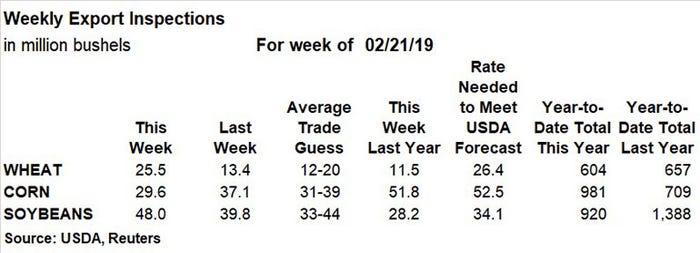
“Soybean inspections were strong at 48 million bushels, including 27.3 million bushels bound for China,” he says. “The total for last week is well above the rate needed to be shipped weekly through August to reach USDA’s forecast for the marketing year. But for that trend to continue, soybeans must follow the reverse of their usual pattern.”
That’s because exports are typically front-loaded into the first half of the marketing year, Knorr says. That didn’t happen this year, after tariffs stemming from the ongoing dispute between the U.S. and China.
For the week ending February 21, total soybean inspections of 48 million bushels moderately bested the prior week’s tally of 39.8 million bushels and exceeded the average trade guess, which ranged between 33 million and 44 million bushels. The weekly rate needed to match USDA forecasts moved lower, to 34.1 million bushels. However, year-to-date totals for 2018/19, now at 920 million bushels, are down nearly 34% from a year ago.
China’s 27.3 million bushels led all destinations for U.S. soybean export inspections last week. Other top destinations included the Netherlands (5.8 million), Mexico (2.4 million), South Korea (2.3 million) and Bangladesh (2.2 million).
“In terms of inspections, China now accounts for 13% of the total and has assumed its place as the leading destination,” Knorr says. “But normally, the country accounts for 60% of U.S. exports. Even with the 10 million metric tons of purchases USDA Secretary Sonny Perdue tweeted about Friday – 367.5 million bushels – more buying will be needed to move the needle much.”
Corn export inspections reached 29.6 million bushels last week, down moderately from the prior week’s total of 37.1 million and below the average trade guess, which ranged between 31 million and 39 million bushels. Cumulative totals for 2018/19 are at 981 million bushels, which is 38% higher year-over-year.
“The absence of soybeans in the pipeline freed shipping capacity for corn, which enjoyed strong shipments this fall,” Knorr says. “But this week’s total fell far short of the 52.5 million bushels needed the rest of the marketing year to reach USDA’s forecast for a record total. Moving all that grain should make for an interesting spring and summer in the cash market, since high barge costs and flooding likely will persist into spring as snow melts in the upper Midwest.”
Mexico was the No. 1 destination for U.S. corn export inspections last week, with 12.4 million bushels. Other leading destinations included Japan (5.6 million), Peru (3.8 million), Colombia (3.5 million) and Morocco (1.2 million).
Wheat export inspections moved up to 25.5 million bushels last week, which was well ahead of the prior week’s total of 13.4 million and exceeding average trade estimates that ranged between 12 million and 20 million bushels. Still, the weekly rate needed to match USDA forecasts ticked slightly higher, to 26.4 million bushels, and cumulative totals for 2018/19 are down 8% year-over-year, at 604 million bushels.
“Wheat inspections picked up nicely, and was in line with USDA’s forecasts,” Knorr says. “But with wheat futures down again sharply, it may be too little, too late.”
The Philippines led all destinations for U.S. wheat export inspections last week, with 6.0 million bushels. Other top destinations included Yemen (5.0 million), Nigeria (3.0 million), Taiwan (2.0 million), Ecuador (2.0 million), Israel (1.8 million) and Egypt (1.8 million).
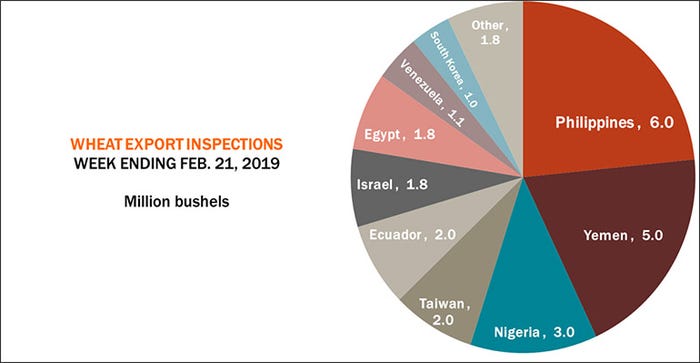
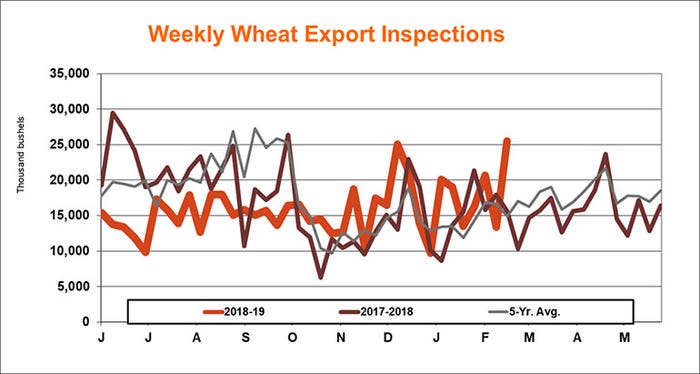
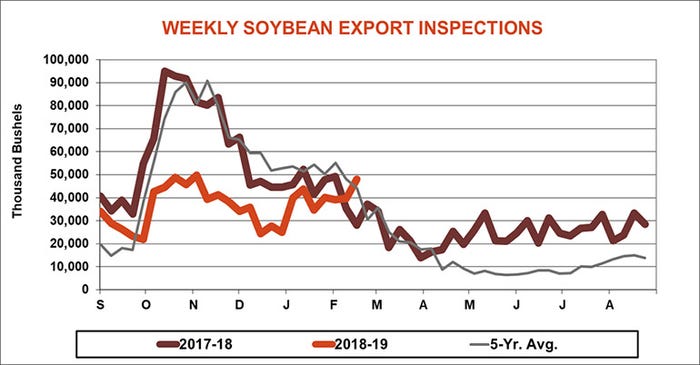
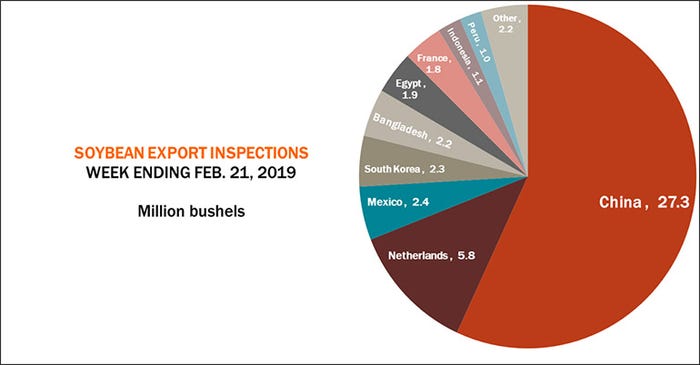
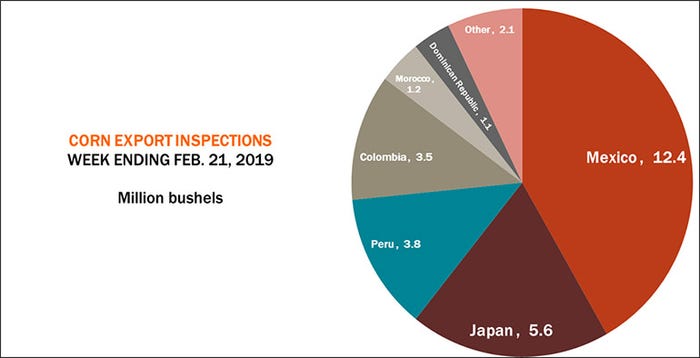
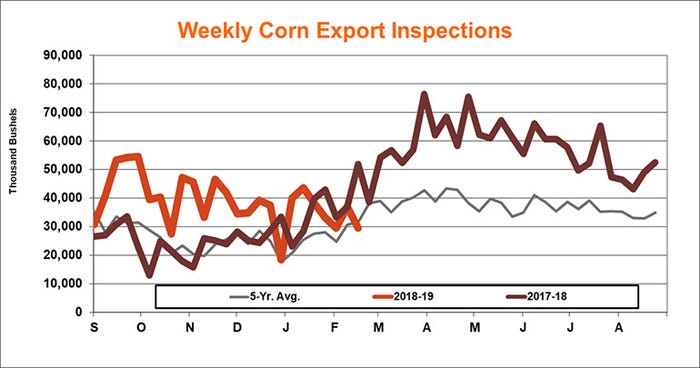
About the Author(s)
You May Also Like





